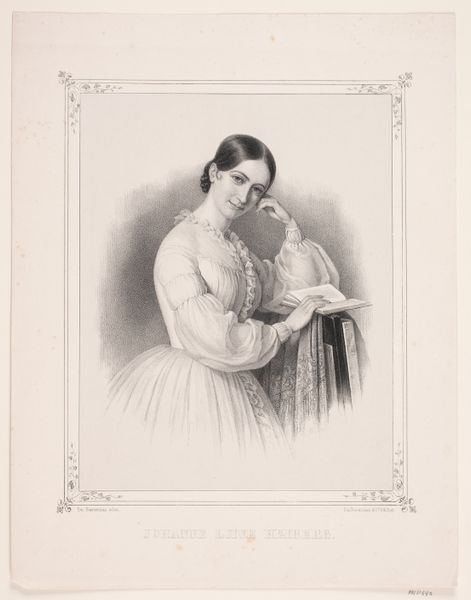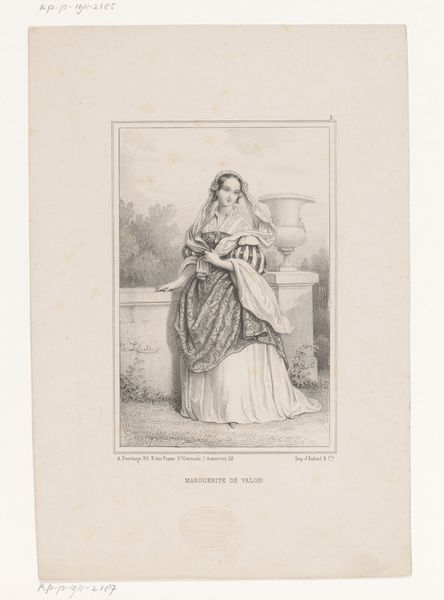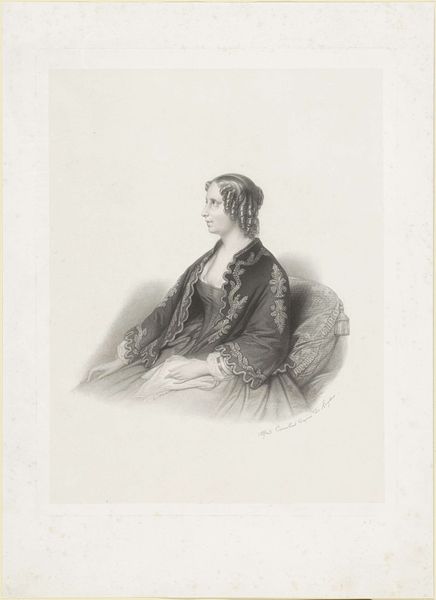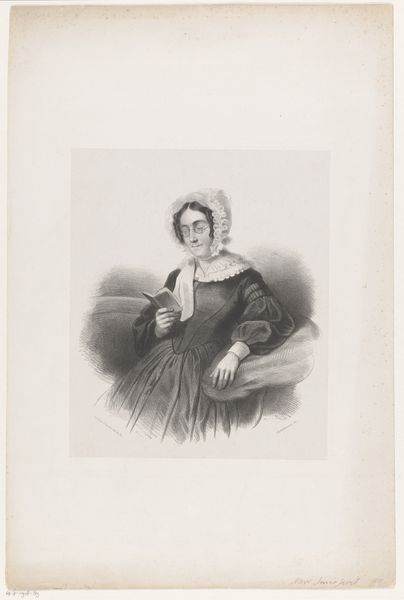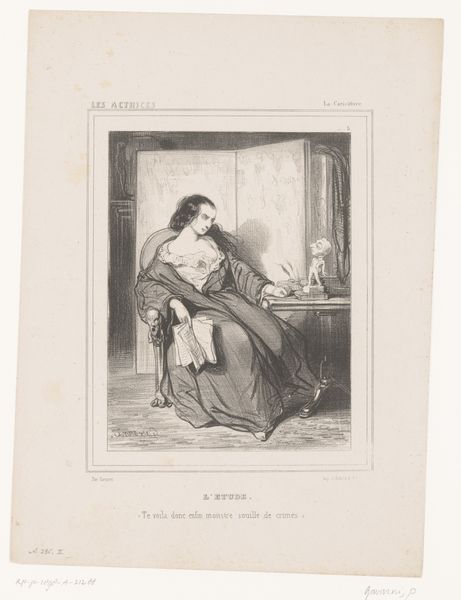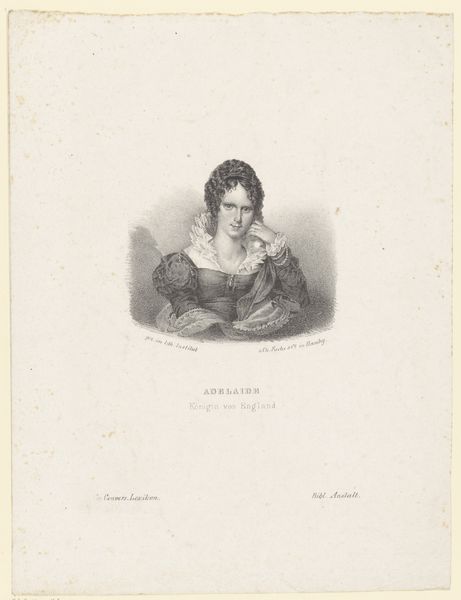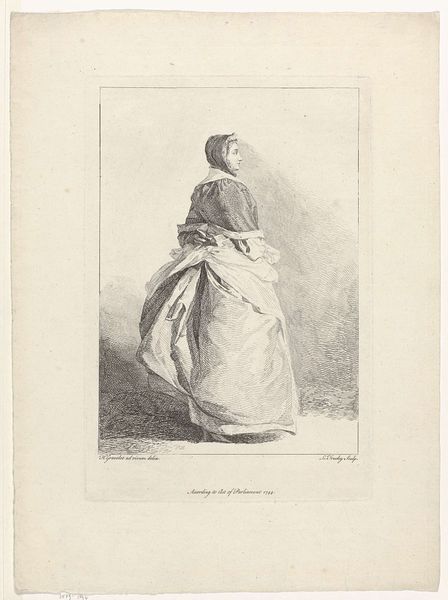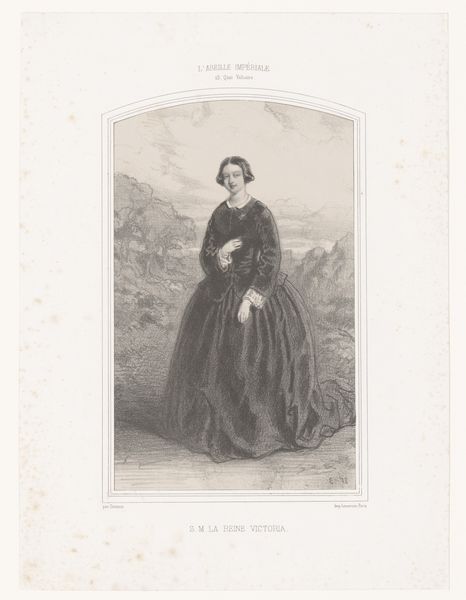
drawing, pencil
#
portrait
#
pencil drawn
#
drawing
#
light pencil work
#
pencil sketch
#
figuration
#
pencil drawing
#
pencil
#
pencil work
#
academic-art
#
realism
Dimensions: height 185 mm, width 126 mm
Copyright: Rijks Museum: Open Domain
Editor: We're looking at a pencil drawing entitled "Portret van Helene in Beieren," created by Franz Zastera between 1865 and 1880. The subdued tones create a rather pensive atmosphere. The subject's pose, with her hand supporting her head, adds to this feeling. How do you interpret the composition and the interplay of light and shadow in this portrait? Curator: The drawing's merit lies primarily in its academic mastery of form and line. Note the artist's effective use of chiaroscuro to model the sitter's face and clothing, creating a sense of three-dimensionality on a flat surface. The controlled strokes of the pencil showcase Zastera's technical skill, adhering to the conventions of realism prevalent during that era. It invites us to analyse how line quality contributes to the psychological depth. Editor: It’s interesting how the shading almost seems to soften the overall effect. Are there specific techniques at play here that contribute to this softness? Curator: Indeed. The subtlety is achieved through delicate blending and the avoidance of harsh lines. The gradation of tones is crucial; examine how Zastera utilizes hatching and cross-hatching in denser areas to suggest darker values, while employing lighter, more dispersed strokes for the highlights. This creates an elegant and polished visual experience. Is it your understanding that the aesthetic is of an elevated, gentle kind? Editor: I hadn't considered the interplay of hatching, but that's very illuminating. Looking closely, I notice how it structures the folds of her dress and shapes the contours of her face. Curator: Precisely. A close analysis shows us a world of calculated artistry beyond immediate surface impressions. It provides a structure for further appreciation of his aesthetic choices.
Comments
No comments
Be the first to comment and join the conversation on the ultimate creative platform.
